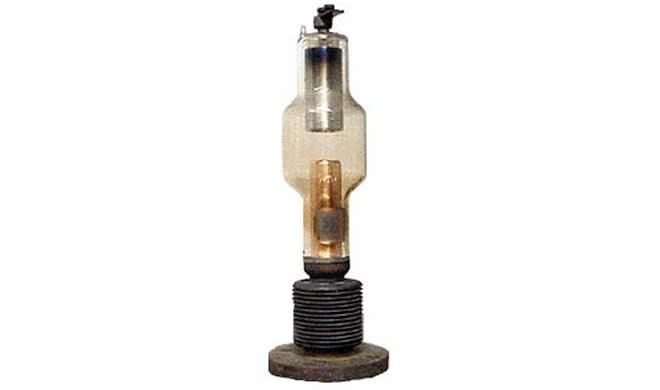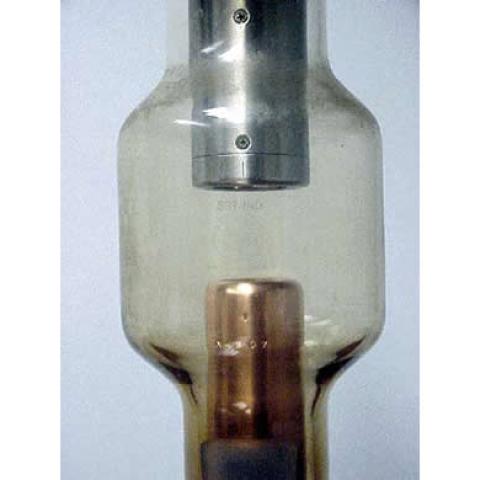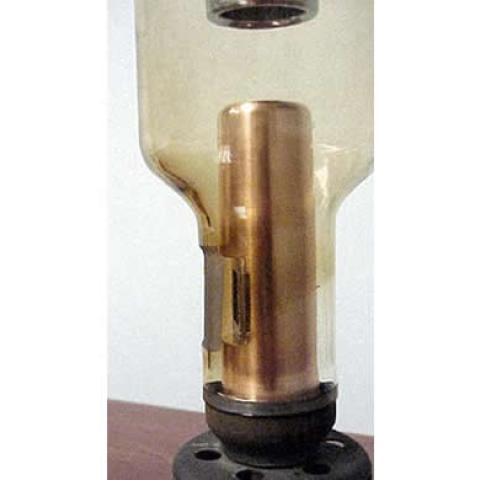
Have you ever broken an arm, leg, or hand and had to wear a cast? Or needed to go to the hospital to see if your hurting ankle was fractured or sprained? If so, we're willing to assume you have come in contact with an x-ray machine.
Like light and radio waves, x-rays are a type of electromagnetic radiation—oscillating electric and magnetic fields traveling at the speed of light. Their usefulness lies in their ability to penetrate matter. X-rays have the power to penetrate matter because of their relatively short wavelengths and high energy. The shorter the wavelength and the higher the energy of an x-ray, the deeper its ability to penetrate.
A man named Wilhelm Konard Roentgen discovered the x-ray in 1895. He began his experiments at the University of Wurzburg with an electric current flow in a partially evacuated glass tube (known as a cathode-ray tube). Roentgen noticed that, whenever the tube was in operation, a piece of barium platinocyanide in line with it gave off light. Roentgen theorized that the interaction of electrons striking the tube's glass wall formed an unknown radiation that caused the fluorescence. Roentgen could not determine how the radiation was carried through space or why it had such penetrating power. For this reason he called the radiation x- rays, taking the name from the mathematician's use of `x' to denote the unknown quantity in a problem. The formal name given the radiation is Roentgen rays, in honor of the discoverer. Roentgen received an Elliott Cresson Medal from The Franklin Institute in November of 1896 for his x-ray work.
Further experiments revealed that x-radiation produces an image on photographic plates and penetrates many materials such as paper, wood, certain metals, and living tissue.
For the first time, physicians had a non-surgical tool to see inside the body. The medical and scientific uses of x-rays spread quickly throughout Europe and the United States during this time.
In the 20th century, Dr. William D. Coolidge, a General Electric scientist and research director, made major contributions to lighting and x-ray technology. Early in his career, Coolidge played a large part in the development of the modern incandescent electric lamp. In 1910, GE announced his development of ductile tungsten, the filament material still used in billions of incandescent electric lamps today. By heating bulk tungsten, Coolidge was able to draw the metal into fine wires as strong as steel and thin enough to be used as lamp filaments. In 1913, his "Coolidge tube," completely revolutionized x-rays and it still remains the model that x-ray tubes for medical purposes are patterned after.
Coolidge's machine allowed x-ray waves to be easily produced by the impact of high-energy electrons on a tungsten anode within a vacuum tube, and then to be directed through a substance and onto a photographic plate. He took Roentgen's discovery of x-rays a few steps further by creating this vacuum tube in which the rays could be generated. Denser materials within the substance being scanned absorb more x-rays (such as the bones in your body), and so produce a brighter photographic image on the plate.
X-rays have become very important, for example in the medical field. Their use has made an incredible contribution to human health. Surgical therapy, treatment of bone fractures, location of various cancers, internal diseases, and malformations—all are possible with the use of x-rays, and have resulted in alleviating pain and saving lives on a large scale.
Just be careful when you hop on your bike or dive off a diving board during your vacation; the only ray of light you should experience this summer is the sun!
Note: The object pictured above is part of The Franklin Institute's protected collection of objects. The images are © The Franklin Institute. All rights are reserved.




